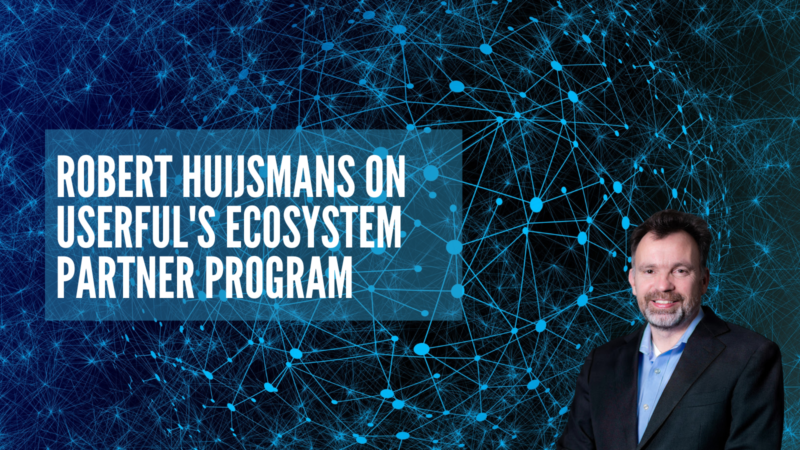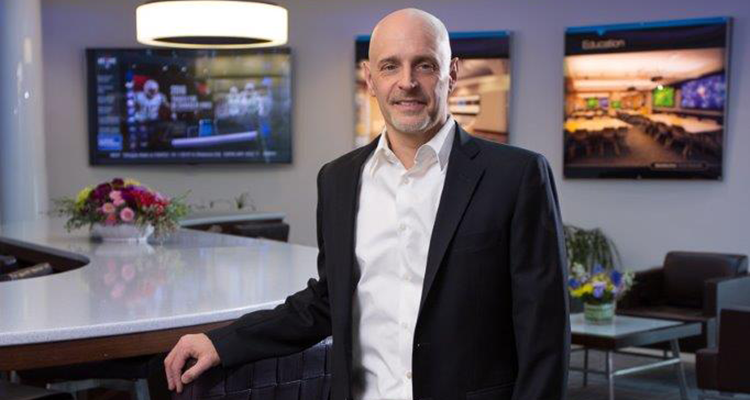Inside The EcoChamber: Interview with Jim Sinopoli of Smart Buildings, LLC
 We continue our Inside the EcoChamber series with Jim Sinopoli, founder of Smart Buildings, LLC. Smart Buildings provides owners, developers and architects with ways to manage, operate and meet their environmental and financial objectives through building systems.
We continue our Inside the EcoChamber series with Jim Sinopoli, founder of Smart Buildings, LLC. Smart Buildings provides owners, developers and architects with ways to manage, operate and meet their environmental and financial objectives through building systems.
Scott Walker: One of the challenges in the GreenAV movement is people making the first step and moving into this marketplace. You come from a background of being an engineer, so how did you get involved in making buildings smarter?
 Jim Sinopoli: I started in control systems for airplanes, got into design, construction and operation of buildings, and slowly took on all systems after a client requested total integration. By training I’m an aeronautical and astronautical engineer. In school I concentrated on the control systems for airplanes, so I knew something about systems and networks. Then I worked at a research lab and did a project for the federal government on satellites for states in the Midwest that shared a satellite to trade government data. Eventually I landed at a consulting firm where I worked on building systems, telecomm, security and AV. We started doing building control systems and then were asked by a client — Ave Maria University in Naples, Florida — to try things a little differently. We designed and bid all of the systems under one contract so we could get a master systems integrator to take on everything related to cabling, control and IT. The metrics showed that the savings on that project were pretty significant, so from there we thought, well, we’re doing all the systems and talking about integration, maybe we can move toward integrated automation.
Jim Sinopoli: I started in control systems for airplanes, got into design, construction and operation of buildings, and slowly took on all systems after a client requested total integration. By training I’m an aeronautical and astronautical engineer. In school I concentrated on the control systems for airplanes, so I knew something about systems and networks. Then I worked at a research lab and did a project for the federal government on satellites for states in the Midwest that shared a satellite to trade government data. Eventually I landed at a consulting firm where I worked on building systems, telecomm, security and AV. We started doing building control systems and then were asked by a client — Ave Maria University in Naples, Florida — to try things a little differently. We designed and bid all of the systems under one contract so we could get a master systems integrator to take on everything related to cabling, control and IT. The metrics showed that the savings on that project were pretty significant, so from there we thought, well, we’re doing all the systems and talking about integration, maybe we can move toward integrated automation.
SW: Your smart buildings reference book, Smart Building Systems for Architects, Owners and Builders, is one of the few on this subject. What need were you trying to fulfill by writing this book?
 JS: We are really in the design and construction industry, so for a time I was doing lunch-and-learns about smart buildings for architectural firms. What I found was that a lot of architects didn’t know much about building systems; they know about the static parts of the building, but not about the building systems themselves. The design and integration of building systems were really left to mechanical engineers, electrical engineers and contractors. The goal of the book was to lay out basic things about each of the systems and building operations and how to go about integration of systems.
JS: We are really in the design and construction industry, so for a time I was doing lunch-and-learns about smart buildings for architectural firms. What I found was that a lot of architects didn’t know much about building systems; they know about the static parts of the building, but not about the building systems themselves. The design and integration of building systems were really left to mechanical engineers, electrical engineers and contractors. The goal of the book was to lay out basic things about each of the systems and building operations and how to go about integration of systems.
SW: What are the biggest hurdles still out there that are impeding the growth of the smart building market? Do owners not know what is possible? Are RFPs not written to deliver it? Are design teams not structured right? Why don’t projects that should be smart buildings end up that way?
JS: Those are probably all true. Owners want a smart building because they like the concept, but they really don’t know a lot about the details. And at the design table we see many designers repeating designs the delivered for other clients rather than putting in the work to do something different.
Also, the design and construction industry had not changed in decades; then in the late ‘90s when energy became the focus, design and construction had to change. At that time very few people had experience with new systems such as exterior shading, water reclamation, sun tracking systems and other new building systems, and we began to see a big disconnect between what is currently being taught in schools and the skillset needed to operate newer, complex buildings. So a major obstacle is having a new complexity to designing, operating and maintaining building systems and having fewer qualified people to actually manage them.
SW: What impact has the economy had on the smart building movement? In terms of sustainability and LEED, we didn’t see any change for several years, but more recently it appears that people are following the tenets but not necessarily going for certification. In this economy and with the current trend in energy prices, it seems that a savvy building owner — particularly in hospitals and universities — might say, I want a smart building because I’m going to own it for many years. But are they making the decision not to pursue because of first-cost fears as opposed to long-term savings?
JS: Well, there’s obviously less new construction going on in the U.S. than we had a few years back, but I also think focus on building systems has become an integral part of design and operations of buildings. There are also building owners that have portfolios of campuses where they have significant existing buildings and square footage and they have corporate mandates for energy management, but they simply can’t get their arms around what they’re consuming and spending, so they’re going the integrated approach to meet those requirements.
SW: Are there vertical markets that look stronger than others?
JS: We have two large health care clients right now, one of which is primarily concerned with managing demand and eventually procuring energy based on the aggregated data from their hospitals.
SW: So they’re looking at leveraging the data gathering to make a more intelligent purchase of energy, based on their demand load predictions?
JS: Yes, they’re trying to do two things. First, on the demand side, they can get information on their hospitals and test energy conservation measures, and if they work the client can standardize those measures across their portfolio of hospitals. Second, on the procurement side, the client spends more than a couple hundred million dollars a year on power and natural gas, so if they can develop some energy profiles from certain hospitals, aggregate those energy loads and then go to the regional energy market, they are likely to save 10 to 15 percent of the cost of the energy, which is a significant chunk of change.
SW: You did a project with Microsoft not too long ago. What was their interest in smart buildings?
JS: Microsoft has a corporate mandate to address and manage energy and sustainability, but they were challenged by compiling all their systems data in one place. We were involved with designing their integration requirements to get all that relevant data; then we created specifications and helped them pick vendors to pilot different software on campus. This process had immediate payback because they discovered information about their buildings that they never knew before and were able to identify immediate savings. They also used to have a five-year schedule to re-commission all the buildings, but now they can re-commission buildings in one year, which provides additional savings.
SW: Do you have any parting words of wisdom for manufacturers, designers or integrators in the AV industry who are interested in smart buildings?
JS: I have always believed designers and contractors in the AV industry have the integration experience. They deal with different kinds of cable and communication protocols, and they take different pieces of equipment and have them work as one system, so there  is a natural symbiosis between the AV industry and building system integration.
is a natural symbiosis between the AV industry and building system integration.
Scott Walker, CTS-D, LEED® AP, is president and CEO of Waveguide Consulting, a leading AV, IT and acoustical consulting firm. He is also a past president of InfoComm International. Scott is recognized as being one of the primary forces behind the founding of the Sustainable Technology Environments Program (STEP) rating system and currently is a member of the STEP Foundation board, which is responsible for managing the STEP program. Scott can be reached at swalker@waveguide.com





